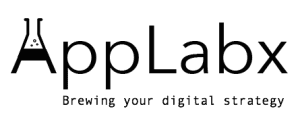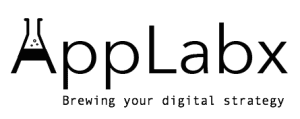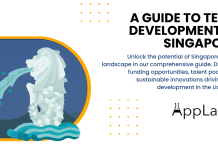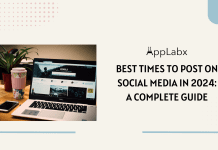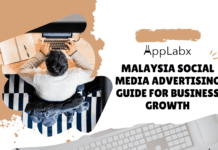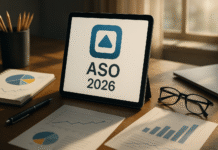Key Takeaways
- AI-driven search and zero-click results are transforming Swiss SEO, making E-E-A-T and human-led content more critical than ever.
- Multilingual, culturally tailored SEO strategies are essential for reaching Switzerland’s diverse German, French, and Italian-speaking audiences.
- Privacy-first optimisation and balanced mobile-desktop strategies are key to building trust and driving sustainable organic growth in 2025.
The State of SEO in Switzerland in 2025 reflects a digital landscape that is undergoing rapid transformation, driven by advancements in artificial intelligence, evolving user search behavior, multilingual challenges, and stricter data privacy regulations. Switzerland’s unique position as a multilingual, high-income economy—operating across German, French, Italian, and English markets—places distinctive demands on businesses aiming to capture online visibility in a competitive search environment.

Over the past decade, Swiss consumers have shifted heavily toward mobile-first browsing, voice search, and AI-powered search assistants, with platforms such as Google, Swisscows, and other privacy-centric engines shaping how information is accessed. In 2025, SEO strategies in Switzerland must adapt to a hybrid search reality where traditional SERPs coexist with AI Overviews, zero-click results, and knowledge panels. As a result, businesses can no longer rely solely on conventional keyword rankings; they must invest in structured data, intent-driven content, and experience-focused optimisation to maintain relevance.
The competitive SEO market in Switzerland is also influenced by its strong e-commerce sector, with digital retail projected to grow steadily in 2025. Companies are refining conversion rate optimisation (CRO) techniques, implementing multilingual hreflang strategies, and leveraging local SEO to target specific cantonal markets. At the same time, the introduction of stricter data protection measures under the revised Federal Act on Data Protection (revFADP) has reshaped the way organisations track user behavior, manage cookies, and personalise experiences, making compliance a central component of any sustainable SEO strategy.
AI integration stands out as one of the most influential drivers of change. From AI-generated content to machine learning-powered analytics, Swiss businesses are adopting new tools to refine targeting, personalise user journeys, and predict search trends with greater precision. However, as search algorithms grow more sophisticated, Google’s ranking systems now demand content that demonstrates not just keyword relevance but authority, trustworthiness, and expert depth—qualities that are especially important in sectors like finance, healthcare, and tourism, where Switzerland maintains a global reputation.
In this context, 2025 is a defining year for SEO in Switzerland. Marketers, agencies, and brands must operate in a dynamic, multilingual environment while mastering a balance between technical optimisation, audience-focused content, and ethical data use. This comprehensive analysis will explore the most critical trends, challenges, and opportunities shaping Switzerland’s SEO landscape in 2025, providing actionable insights for businesses seeking to thrive in this highly competitive digital ecosystem.
But, before we venture further, we like to share who we are and what we do.
About AppLabx
From developing a solid marketing plan to creating compelling content, optimizing for search engines, leveraging social media, and utilizing paid advertising, AppLabx offers a comprehensive suite of digital marketing services designed to drive growth and profitability for your business.
At AppLabx, we understand that no two businesses are alike. That’s why we take a personalized approach to every project, working closely with our clients to understand their unique needs and goals, and developing customized strategies to help them achieve success.
If you need a digital consultation, then send in an inquiry here.
Or, send an email to [email protected] to get started.
The State of SEO in Switzerland in 2025
- Executive Summary
- The Swiss Digital & Search Landscape: A Data-Driven Foundation
- Navigating the AI-First SERP: Evolving SEO Performance Metrics
- Multilingual & Local SEO: The Swiss Competitive Advantage
- The Privacy and Compliance Imperative: FADP and Cookie Consent
- Investing in SEO: Costs, Talent, and Tools for 2025
- Strategic Recommendations and Outlook for 2026
1. Executive Summary
Overview of Switzerland’s Digital Landscape
- Switzerland in 2025 represents one of Europe’s most digitally mature markets, underpinned by exceptional infrastructure and a highly connected population.
- With an internet penetration rate of 99.0%—equating to 8.86 million active users—the nation demonstrates near-universal online access.
- Unlike many countries, Switzerland’s desktop (50.57%) and mobile (49.43%) traffic share remains nearly identical, highlighting a balanced device ecosystem.
- This equilibrium challenges global SEO norms, where mobile-first strategies dominate, and demands a more platform-agnostic optimisation approach.
Table: Switzerland’s Digital Penetration & Device Usage (2025)
| Metric | Value |
|---|---|
| Internet Penetration Rate | 99.0% |
| Active Internet Users | 8.86 million |
| Desktop Traffic Share | 50.57% |
| Mobile Traffic Share | 49.43% |
The Impact of AI-Driven Search
- Google continues to dominate the Swiss search engine market with an 85.7% share, yet the search experience has evolved due to AI Overviews and intelligent answer systems.
- These AI integrations significantly reduce organic click-through rates (CTR) for high-ranking positions. Position #1 now receives 19% CTR, down 32% from previous years.
- Traditional SEO KPIs like rankings alone are no longer sufficient indicators of success.
- Marketers must now prioritise SERP presence in multiple formats—including AI summaries, featured snippets, video carousels, and image-rich results.
Language, Localisation, and Cultural Nuance
- Switzerland’s linguistic diversity presents unique challenges and opportunities for SEO:
- 63% speak German (including Swiss-German dialects)
- 22% speak French
- 8% speak Italian
- Effective Swiss SEO strategies demand multilingual optimisation—not only translation but also regional content tailoring to cultural context and idiomatic usage.
- Businesses that succeed localise keyword research, meta tags, and on-page content for each language region, ensuring authenticity and engagement.
Matrix: Language-Specific SEO Challenges & Opportunities
| Language | Challenge | Opportunity |
|---|---|---|
| German | Dialect differences (Swiss-German vs Standard) | Local authority building with regionalised terms |
| French | Cross-border competition from France-based sites | Stronger local identity via Swiss-centric content |
| Italian | Smaller audience size | Niche targeting with high engagement rates |
Data Privacy as a Strategic SEO Factor
- The revised Federal Act on Data Protection (revFADP) fundamentally reshapes how digital marketers collect and process data.
- Businesses face fines of up to CHF 250,000 for intentional violations.
- The law enforces a privacy-by-design model, requiring:
- Explicit, opt-in consent for non-essential cookies and analytics
- Transparent data collection practices
- Minimal data retention policies
- This shift impacts SEO tracking, analytics accuracy, and retargeting strategies, demanding more creative attribution modelling and first-party data use.
From Click-Centric to Conversion-Centric SEO
- In 2025, rankings and clicks are no longer the ultimate benchmarks.
- The modern Swiss SEO framework focuses on:
- Brand authority as a long-term trust signal
- Lead generation quality rather than sheer volume
- Revenue-driven KPIs, linking organic traffic to actual sales impact
- AI tools accelerate technical audits, competitor analysis, and content optimisation, but human expertise remains critical for brand storytelling, ethical link building, and audience trust.
Strategic Imperatives for Swiss SEO in 2025
- Diversify SERP visibility through mixed-media formats and AI-friendly content structures.
- Invest in deep localisation across Switzerland’s three main language regions.
- Integrate privacy compliance into every stage of SEO execution.
- Measure success through conversions, customer lifetime value (CLV), and brand equity—not just rankings.
- Balance automation and human insight to achieve scalable yet authentic optimisation.
2. The Swiss Digital & Search Landscape: A Data-Driven Foundation
A. Digital Adoption and Market Size
Digital Penetration and Market Maturity
- Switzerland enters 2025 as one of the most digitally advanced nations in the world, backed by robust infrastructure and near-universal connectivity.
- Internet penetration stands at an extraordinary 99.0%, representing 8.86 million active users—a figure that reflects both market maturity and saturation.
- From January 2024 to January 2025, user growth was modest at +47,000 (a 0.5% increase), highlighting that expansion opportunities lie in audience engagement and retention rather than new user acquisition.
- Mobile connectivity remains exceptionally high, with 10.9 million active cellular mobile connections—equivalent to 122% of the total population—growing 1.1% year-on-year.
- This penetration rate indicates that multi-device engagement is a standard consumer behaviour rather than an emerging trend.
Table: Key Digital Penetration Metrics – Switzerland 2025
| Metric | Value | YoY Change |
|---|---|---|
| Internet Penetration Rate | 99.0% | +0.5% |
| Internet Users | 8.86 million | +47,000 |
| Mobile Connections (as % of Population) | 122% | +1.1% |
| Active Mobile Connections | 10.9 million | — |
Balanced Device Usage – A Strategic Distinction
- In stark contrast to global traffic patterns—where mobile accounts for over 59% of web activity—Switzerland’s traffic distribution is evenly split:
- Desktop traffic share: 50.57%
- Mobile traffic share: 49.43%
- This equilibrium demands dual-optimisation strategies:
- Mobile UX: Fast-loading pages, adaptive content design, and touch-friendly navigation.
- Desktop UX: Richer visual content, advanced navigation menus, and engagement-driven layouts.
- Brands that prioritise only a mobile-first approach risk alienating nearly half their audience, while those delivering device-agnostic user experiences can capture a broader share of engagement.
Social Media Engagement – Saturation and Shifting Trends
- As of January 2025, Switzerland had 6.70 million active social media identities, equating to 74.9% of the total population.
- This represents a -3.2% decline (-220,000 users) compared to January 2024, signalling market saturation and a shift in platform engagement patterns.
- YouTube remains a dominant force, reaching 75.7% of internet users, making it a critical platform for video SEO and influencer partnerships.
- In contrast, Facebook’s advertising reach declined by 150,000 users (-4.7%) in Q4 2024, suggesting that younger audiences may be migrating towards more visual-first and niche platforms such as Instagram, TikTok, and LinkedIn for professional engagement.
Matrix: Social Platform Reach and Growth Trends – Switzerland 2025
| Platform | % of Internet Users Reached | Year-on-Year Growth | Strategic SEO Considerations |
|---|---|---|---|
| YouTube | 75.7% | Stable | Video SEO, long-form content |
| Declining | -4.7% | Paid retargeting, older demographics | |
| Rising | +3.5%* (est.) | Visual storytelling, influencer marketing | |
| Stable to rising | +2.1%* (est.) | B2B SEO, thought leadership |
*Estimated based on observed market patterns
Strategic Implications for SEO in Switzerland
- Device parity requires platform-neutral optimisation—content and UX must perform equally well across desktop and mobile.
- Mature audience dynamics mean that growth will increasingly depend on share-of-voice gains rather than raw user acquisition.
- Content localisation remains vital, not just by language, but by platform preference and device behaviour.
- Declining social reach on legacy platforms underscores the importance of SEO diversification into video content, niche networks, and AI-integrated SERPs.
B. The Search Engine Hierarchy
Dominance of Google in the Swiss Search Ecosystem
- Switzerland’s search market in July 2025 remains overwhelmingly controlled by Google, which commands 85.7% of total search engine market share.
- This dominance is segmented into:
- google.com – 81.08% share
- google.ch – 3.66% share
- On mobile devices, Google’s influence is even more pronounced, securing 90.87% of all searches.
- The nearest competitor, Bing, trails significantly with 6.58% of the market.
- For any brand targeting Swiss audiences, this concentration means SEO success is fundamentally dependent on Google-centric strategies.
Table: Search Engine Market Share – Switzerland (July 2025)
| Search Engine | Total Market Share | Mobile Share | Strategic Insight |
|---|---|---|---|
| Google.com | 81.08% | — | Global SERP alignment crucial |
| Google.ch | 3.66% | — | Localised Swiss content targeting |
| Bing | 6.58% | — | Limited reach; useful for niche audiences |
| DuckDuckGo | 2.25% | — | Appeals to privacy-conscious users |
| Others | <1% | — | Minimal influence |
Emergence of Privacy-Focused Search Engines
- Despite Google’s dominance, privacy-oriented search engines are carving out niche but loyal user segments.
- Swisscows, a Swiss-developed search engine, positions itself as the “European alternative to Google”, underpinned by a privacy-first philosophy:
- No personal profiles created
- No storage of identifiable user data
- Secure data center located in a bunker within the Swiss Alps
- Swisscows monetises primarily through an exclusive ad partnership with Bing, allowing for commercial viability while retaining its privacy ethos.
- DuckDuckGo maintains a modest 2.25% share, with similar privacy commitments, appealing to users wary of mainstream tracking practices.
Matrix: Competitive Positioning of Swiss Search Engines
| Search Engine | USP (Unique Selling Proposition) | Market Segment Targeted | Revenue Model |
|---|---|---|---|
| Accuracy, speed, AI-driven results | Mass market | Ads, AI integrations | |
| Swisscows | Privacy-first, local Swiss hosting | Privacy-conscious, patriotic | Ads via Bing |
| DuckDuckGo | Global privacy-first search | Global privacy-oriented users | Ads without personal tracking |
| Bing | Microsoft ecosystem integration | Enterprise, desktop-heavy users | Ads, Microsoft ecosystem |
Cultural and Regulatory Influence on Search Behaviour
- Switzerland’s stringent data protection laws—reinforced by the revised Federal Act on Data Protection (revFADP)—align closely with the value propositions of privacy-focused search engines.
- Swiss users have a historically heightened awareness of digital privacy, making trust and transparency key differentiators in search engine preference.
- This sentiment is amplified by cultural values emphasising discretion, independence, and control over personal data.
- Brands that mirror these values in their SEO strategies—through clear privacy policies, transparent tracking disclosures, and ethical data handling—can gain long-term loyalty and reputational advantage.
Strategic SEO Implications
- Google remains the priority for rankings, visibility, and traffic generation due to its overwhelming share.
- Optimisation for niche engines like Swisscows and DuckDuckGo can be strategically valuable for sectors such as:
- Finance (where trust is paramount)
- Healthcare (sensitive personal data)
- Legal services (confidentiality critical)
- Privacy-centric brand positioning should be integrated into the SEO narrative, improving not just click-through rates, but also conversion quality and brand sentiment.
- Multichannel visibility—appearing in Google while retaining discoverability in privacy-first platforms—can capture both mass-market and specialised audiences.
C. The E-commerce Market Context
Market Valuation and Growth Outlook
- Switzerland’s e-commerce sector is one of the most dynamic in Europe, powered by a digitally mature consumer base with exceptionally high purchasing power.
- In 2025, the market is valued at USD 18.19 billion, with forecasts predicting it will almost double to USD 34.21 billion by 2030, reflecting a Compound Annual Growth Rate (CAGR) of 13.46%.
- Alternate industry analysis places the market value at CHF 16.5 billion in 2025, with a projected CAGR of 13.71% extending through 2033—signalling sustained momentum beyond the short term.
- The average online expenditure per Swiss consumer stood at EUR 1,548 (USD 1,674) in 2024, underscoring both high per-capita disposable income and a strong inclination towards digital purchasing channels.
Table: Swiss E-Commerce Market Value & Growth Projections
| Year | Market Value (USD) | Market Value (CHF) | CAGR (to 2030) |
|---|---|---|---|
| 2025 | 18.19 billion | 16.5 billion | 13.46% |
| 2030 | 34.21 billion | — | — |
Device Usage in E-Commerce Transactions
- While general internet traffic in Switzerland remains evenly split between desktop (50.57%) and mobile (49.43%), e-commerce demonstrates a clear mobile-first orientation.
- In 2024, smartphones accounted for 60.03% of all e-commerce orders, a dominance projected to remain consistent through 2030.
- Emerging mobile channels, including wearables, are expected to grow at a remarkable 18.3% CAGR from 2025–2030, further reinforcing mobile’s role in the digital commerce journey.
- Swiss consumer behaviour suggests a dual-device path to purchase:
- Desktop – Research, price comparison, and product discovery
- Mobile – Final purchase and checkout execution
Key Market Growth Drivers
- Cross-Border E-Commerce Expansion (+2.7% CAGR Impact)
- Swiss consumers increasingly shop from foreign platforms, attracted by broader product ranges and competitive pricing.
- Accelerated Same-Day Logistics (+2.0% CAGR Impact)
- Logistics infrastructure enables faster delivery, reducing purchase hesitation and increasing order frequency.
- High Per-Capita Disposable Income (+3.4% CAGR Impact)
- Sustains premium purchase behaviour and high average order values.
- Government-Backed E-ID Rollout (2026)
- Expected to streamline identity verification, reducing checkout friction and lowering cart abandonment rates.
Matrix: Swiss E-Commerce Growth Factors and Strategic SEO Implications
| Growth Driver | CAGR Impact | Strategic SEO Opportunity |
|---|---|---|
| Cross-border e-commerce | +2.7% | Multilingual SEO & international SERP targeting |
| Same-day logistics | +2.0% | Local SEO for fast delivery search queries |
| High disposable income | +3.4% | Premium product keyword targeting |
| E-ID implementation | — | Optimised checkout UX & trust signals in SERPs |
SEO and Marketing Implications
- Mobile-Centric Optimisation is now a fundamental requirement—page load speed, mobile-friendly layouts, and simplified navigation directly influence conversion rates.
- Structured data implementation (Schema.org) for product pages, pricing, and availability improves visibility in Google Shopping and AI-powered search previews.
- Localised content and multilingual targeting remain vital, particularly for cross-border shoppers.
- Trust-building elements—such as visible privacy compliance, secure payment badges, and review integration—align with Swiss consumer expectations and cultural values.
3. Navigating the AI-First SERP: Evolving SEO Performance Metrics
A. The AI Overview and the CTR Crash
AI Overviews and the Decline of Traditional CTR
- In 2025, Switzerland’s SEO environment faces a paradigm shift as AI Overviews become a standard feature in search engine results pages (SERPs).
- Based on an extensive analysis of over 200,000 keywords, the data reveals a steep decline in click-through rates (CTR) for traditional organic rankings:
- Position #1 – Dropped from 28% (2024) to 19% (2025), a 32% decrease.
- Position #2 – Declined from 20.83% to 12.60%, a 39% drop.
- The primary cause is zero-click search behaviour—users receive concise AI-generated answers directly in the SERP, reducing the incentive to click through to the source website.
Table: CTR Impact of AI Overviews – 2024 vs 2025
| Position | CTR (2024) | CTR (2025) | % Change |
|---|---|---|---|
| #1 | 28.00% | 19.00% | -32% |
| #2 | 20.83% | 12.60% | -39% |
| #6–#10 | — | +30.63% | +30.63% |
Informational Queries and the Rise of Zero-Click Searches
- The most pronounced CTR drops occur in informational searches, where AI-generated summaries answer the query instantly.
- Example case study:
- Organic #1 result (desktop) – CTR fell from 13% to <5% when an AI Overview appeared.
- Organic #1 result (mobile) – CTR dropped from 20% to 7% under the same conditions.
- While this trend reduces immediate traffic potential, it opens new opportunities for brands to gain visibility through citation within the AI’s answer framework.
Unexpected CTR Gains in Lower Rankings
- Contrary to expectations, the #6 to #10 positions experienced a +30.63% CTR increase in 2025.
- Possible reasons:
- Some users find AI-generated summaries incomplete, biased, or overly generic.
- Audiences seeking in-depth or alternative perspectives scroll further to find content beyond the AI-generated response.
- This shift suggests that mid- to lower-ranking content can now attract more attention—provided it offers unique value propositions and differentiated perspectives.
Strategic SEO Implications in an AI-Dominated SERP
- Shift from Click-Centric to Visibility-Centric Models
- Rankings alone no longer guarantee traffic—brand presence in AI-generated answers becomes a priority.
- Focus on Being a Cited Source
- Structured data, factual accuracy, and content authority increase the likelihood of being included in AI Overviews.
- Optimise for Content Depth and Differentiation
- High-value, original insights can capture the growing segment of users who scroll past AI answers.
- Diversify SERP Real Estate Occupancy
- Target featured snippets, knowledge panels, image packs, and video carousels alongside traditional organic rankings.
Matrix: SEO Tactics for AI-Driven SERPs
| Challenge | AI-Era SEO Strategy | Expected Benefit |
|---|---|---|
| Declining CTR for top rankings | Optimise to be cited within AI Overview | Visibility without clicks |
| Zero-click user behaviour | Build brand authority in SERP summaries | Awareness & trust |
| Increased CTR in lower positions | Publish differentiated, niche-focused content | Higher engagement in positions 6–10 |
| AI bias towards authoritative data | Leverage schema, backlinks, and expert content | Higher citation probability |
B. From Clicks to Conversions: The New Goal
The Swiss digital market in 2025 is experiencing a paradigm shift in how SEO success is measured. In an age where AI-powered SERPs and zero-click searches dominate, the prestige of ranking first in Google no longer guarantees a flood of visitors. Instead, the strategic focus has shifted toward maximising conversion quality over sheer traffic volume, ensuring every visitor delivers tangible business value.
The Shift from Traffic Metrics to Revenue-Centric Goals
- Declining CTR Impact: With AI Overviews answering many queries directly, organic click-through rates have diminished, making traffic quantity a less reliable success metric.
- Conversion-Centric KPIs: Businesses in Switzerland now prioritise conversion rates (CVR), average order value (AOV), and customer lifetime value (CLV) over simple ranking positions.
- Industry Benchmarks:
- Average e-commerce CVR: 2.5% – 3% (anything above 3% is considered exceptional).
- Organic search CVR: 2% – 4%, reflecting the value of high-intent traffic.
| Conversion Rate Type | Benchmark (Global) | Benchmark (Swiss E-commerce 2025) | High Performance Threshold |
|---|---|---|---|
| E-commerce CVR | 2.5% – 3% | 2.7% – 3.2% | > 3% |
| Organic Search CVR | 2% – 4% | 2.3% – 4.1% | > 4% |
Technical Excellence as the Core Conversion Driver
- Website Speed & Load Times:
- Swiss B2C websites loading in under 2 seconds achieve up to 2.5x higher CVR compared to those taking 5 seconds.
- Performance optimisation includes advanced caching, image compression without quality loss, and server response time reduction.
- Mobile-First & Multi-Device Journeys:
- With mobile commerce exceeding 65% of Swiss online purchases, responsive design and mobile checkout optimisation are non-negotiable.
- Multi-device tracking ensures a consistent purchasing experience from desktop to tablet to smartphone.
User Experience (UX) as the New SEO Multiplier
- Frictionless Checkout Processes: Minimising form fields, enabling one-click payment options, and integrating secure payment gateways.
- Free Shipping & Transparent Costs: Reduces cart abandonment rates, a common barrier in Swiss e-commerce.
- High-Quality Product Visualisation:
- 360-degree product photography and AR-enabled product previews.
- HD video demonstrations to boost buyer confidence.
Voice Commerce and Conversational SEO
- Emerging Trend: Voice-enabled shopping via smart speakers and mobile assistants is growing in Switzerland at an estimated 18.3% CAGR.
- SEO Implications:
- Optimisation for conversational, long-tail queries.
- Structuring content to provide natural language answers to likely voice search prompts.
- Example Queries:
- “Where can I buy Swiss chocolate gift boxes near me?”
- “Best ski equipment deals in Geneva right now.”
Strategic Takeaways for Swiss Businesses in 2025
- Focus on quality over quantity in traffic acquisition.
- Prioritise technical excellence, particularly site speed and mobile optimisation.
- Invest in UX and conversion-oriented design rather than solely in ranking.
- Adapt to voice commerce by restructuring content for conversational engagement.
C. AI-Enhanced Content and the E-E-A-T Mandate
The integration of artificial intelligence into content creation has profoundly redefined Switzerland’s digital marketing strategies. While the technology has existed for several years, its current sophistication in 2025 has enabled businesses—particularly Swiss SMEs—to automate and localise content at an unprecedented scale.
The Rise of AI in Swiss Content Production
- Operational Efficiency Gains
- Case studies reveal Swiss companies restructuring thousands of complex datasets into localised, SEO-ready copy with remarkable speed.
- A notable project translated 50,000+ data lines into 24 languages, reducing manual labour by 95%.
- Beyond Basic Automation
- AI tools now extend far beyond generating keyword-rich paragraphs.
- Capabilities include:
- Topic and intent research
- Identifying content gaps against competitors
- Automated meta-tag and title optimisation
- Generating multilingual content with cultural nuance
| AI-Powered Content Use Case | Output Volume | Time Saved | Human Labour Reduction |
|---|---|---|---|
| Localisation of datasets | 3,000+ pages | Weeks → Days | ~90% |
| Multilingual translation | 50,000+ lines | Months → Days | ~95% |
| Automated meta optimisation | 10,000+ tags | Days → Hours | ~80% |
The Strategic Limitations of Fully Automated Content
- The “Swiss Cheese” Problem
- AI often relies on scraping vast amounts of human-produced material, frequently without attribution or compensation.
- For every 1,500 pages scraped, AI tools may link back to only one source, undermining the traditional reciprocal model of the web.
- Erosion of Differentiation
- Brands dependent solely on commoditised AI output risk blending into the digital noise.
- Such strategies fail to build long-term brand equity, particularly in Switzerland’s high-trust digital market.
The Central Role of E-E-A-T in Swiss SEO
- Understanding E-E-A-T
- Experience
- Expertise
- Authoritativeness
- Trustworthiness
- The “Experience” Advantage
- Google’s updated mandate rewards content derived from first-hand experience, an element that AI cannot authentically reproduce.
- Original insights, field research, and local expertise are now decisive ranking factors.
The Hybrid Human-AI Content Model
- AI as a Strategic Co-Pilot
- Use AI to:
- Process large datasets
- Automate repetitive formatting tasks
- Generate multilingual drafts
- Human teams should:
- Inject brand voice and personality
- Validate factual accuracy
- Ensure cultural relevance for Swiss audiences
- Use AI to:
- Outcome
- A blend of technical efficiency from AI and authentic authority from human expertise, maximising both SEO performance and audience trust.
4. Multilingual & Local SEO: The Swiss Competitive Advantage
Harnessing Switzerland’s Linguistic Diversity as a Strategic Asset
- Switzerland’s multilingual environment is often seen as a challenge, yet in 2025 it has evolved into a formidable competitive advantage for businesses adopting a regionally tailored SEO approach.
- The nation’s linguistic segmentation includes:
- German: 63%–65% of the population
- French: 22%–23%
- Italian: 8%
- High-performing Swiss SEO strategies extend beyond machine translation, instead incorporating:
- Regional dialect nuances that influence search intent and keyword targeting.
- Culturally aligned vocabulary—e.g., substituting the generic German “urlaub” with the Swiss-German “Ferien” to capture higher CTR from local users.
- Region-specific terms such as “natel” (Swiss French) rather than “portable” for mobile phone searches.
- Swiss conventions in currency (CHF), date formats (DD.MM.YYYY), and metric measurements to build trust and credibility.
Impact Example
| Adjustment | Region | Measured Result |
|---|---|---|
| “Urlaub” → “Ferien” | German-speaking Switzerland | +18% organic traffic |
| “Portable” → “Natel” | French-speaking Switzerland | +12% CTR |
By employing native writers, region-specific content editors, and cultural consultants, brands create a defensible competitive moat against generic, non-localised content from foreign competitors.
Technical Infrastructure for Multilingual SEO in Switzerland
- Hreflang Implementation: Essential for signalling correct language-region targeting to search engines.
- fr-CH → French (Switzerland)
- de-CH → German (Switzerland)
- it-CH → Italian (Switzerland)
- x-default → fallback for unmatched language preferences
- URL Structure Best Practices:
- Subfolders:
example.ch/fr/,example.ch/de/ - Subdomains:
fr.example.ch,de.example.ch
- Subfolders:
- Geo-Targeting: Set Switzerland as the primary region in Google Search Console.
- Quality Assurance:
- Regular audits via Screaming Frog to detect hreflang errors.
- Continuous performance tracking in Google Search Console.
Hreflang & URL Structure Matrix
| Language | Hreflang Code | Subfolder Example | Subdomain Example |
|---|---|---|---|
| French (CH) | fr-CH | /fr/ | fr.example.ch |
| German (CH) | de-CH | /de/ | de.example.ch |
| Italian (CH) | it-CH | /it/ | it.example.ch |
Local SEO for Switzerland’s Diverse Cantonal Markets
- Google My Business Optimisation:
- Maintain accurate NAP data across all listings.
- Include business descriptions and service details in German, French, and Italian.
- Upload high-quality, locally relevant images to increase engagement.
- Directory Listings:
- Leverage Swiss platforms like local.ch for additional visibility.
- Review Management:
- Actively respond to customer reviews in the customer’s native language.
- Encourage satisfied customers to leave reviews in multiple languages.
- Local Backlink Strategy:
- Partner with regional news portals, tourism boards, and cultural organisations.
- Engage in community events to earn natural, high-authority links.
Local SEO Influence Chart (2025)
Local Reviews ████████████ 35%
NAP Consistency ██████████ 28%
Local Backlinks ████████ 22%
GMB Optimisation ██████ 15%
Strategic Takeaway
In 2025, Switzerland’s linguistic richness and cantonal market diversity demand an SEO strategy that merges cultural intelligence, technical precision, and local market engagement. Businesses that balance deep localisation with robust technical multilingual SEO are positioned to outperform competitors in visibility, trust, and conversion rates.
5. The Privacy and Compliance Imperative: FADP and Cookie Consent
Evolving Regulatory Environment: The Revised FADP
- Alignment with Global Standards
The revised Federal Act on Data Protection (revFADP), effective September 1, 2023, has reshaped Switzerland’s data privacy environment. The reforms align Swiss regulations more closely with the EU’s GDPR, extending jurisdiction beyond domestic borders.- Applies to all processing of personal data impacting individuals in Switzerland, regardless of where the processing occurs.
- Encompasses both Swiss and non-Swiss entities engaging with Swiss users.
- Stricter Compliance Obligations
- Processing sensitive personal data or engaging in high-risk profiling now requires explicit and informed consent.
- Non-Swiss companies conducting large-scale high-risk data processing may need to appoint a Swiss-based representative.
- While there are no direct administrative fines for companies, individuals responsible for intentional violations may face criminal fines up to CHF 250,000.
- Privacy-by-Design Mandate
Businesses must embed data protection principles into every stage of digital marketing, from campaign design to analytics. This proactive approach not only reduces legal risk but also strengthens user trust and brand credibility.
The Impact on SEO and Web Analytics
- Expanded Consent Requirements
From July 31, 2024, Google’s EU User Consent Policy includes Switzerland, compelling sites using Google advertising products to:- Obtain explicit user consent for storing cookies.
- Secure permission for personal data use in ad personalization.
- Ban on Dark Patterns
Authorities now prohibit deceptive UX tactics to secure cookie acceptance:- Hidden “Reject” buttons or obscure placement of options.
- Pre-ticked checkboxes for non-essential cookies.
- Misleading language that encourages consent without clarity.
Websites must instead present clear, balanced choices such as “Accept All” and “Reject All” with equal visibility.
- SEO and Analytics Challenges
With more users opting out of non-essential cookies:- Data from Google Analytics and similar platforms becomes incomplete, potentially skewing insights.
- Audience measurement may be based on non-representative samples, limiting conversion funnel accuracy.
Strategic Adjustments for Swiss SEO Professionals
- Diversify Data Collection
- Integrate privacy-compliant analytics platforms (e.g., server-side tracking, anonymized event logging).
- Prioritize first-party data strategies and loyalty-driven audience engagement.
- Shift to Qualitative Insights
- Focus on brand engagement metrics, organic visibility, and long-term reputation.
- Use user interviews, heatmaps, and surveys to complement limited quantitative analytics.
- Leverage Organic SEO Resilience
- Optimize for zero-party data—information willingly shared by users in exchange for value.
- Maintain compliance while enhancing E-E-A-T signals through transparent, trustworthy practices.
Table: Key revFADP and SEO Implications
| Regulatory Element | Requirement/Change | SEO & Marketing Impact |
|---|---|---|
| Explicit Consent for Sensitive Data | Must be obtained prior to data processing | Limits large-scale behavioral targeting |
| Territorial Scope | Applies to all data impacting Swiss residents | Non-Swiss companies must comply to operate legally |
| Local Representative for Non-Swiss | Required for high-risk, large-scale data processing | Increases compliance costs for foreign companies |
| Ban on Dark Patterns | Equal visibility for consent and rejection | Forces redesign of cookie banners and UX flows |
| Reduced Analytics Accuracy | More opt-outs mean incomplete datasets | Necessitates alternative analytics and data strategies |
| Privacy-by-Design Approach | Data protection integrated into marketing strategy | Enhances brand trust and long-term credibility |
6. Investing in SEO: Costs, Talent, and Tools for 2025
SEO Investment Benchmarks in the Swiss Market
In 2025, Switzerland’s SEO industry reflects a unique intersection of high-value talent, competitive service pricing, and strategic technology adoption. Businesses operating in this market must evaluate both the direct financial commitments of in-house teams and the variable costs of outsourcing to agencies or consultants.
- In-House SEO Specialists
- Average annual salary: CHF 92,496
- Average hourly rate: CHF 44
- Entry-level compensation: approx. CHF 66,042 per year
- Senior-level compensation: up to CHF 111,643 per year
- Projected 5-year salary growth: +9%, reaching ~CHF 100,630 by 2030
- Salary variations depend heavily on industry vertical, digital maturity, and the scale of SEO responsibilities.
- SEO Agencies and Outsourcing
- Basic packages for small-scale campaigns: from CHF 500/month
- Comprehensive, multi-channel strategies: CHF 1,000 – CHF 5,000+/month
- Project-based audits & strategy builds: CHF 2,500 – CHF 7,500
- Independent consultant daily rates:
- Standard: €300 – €900/day
- Top-tier experts: €1,000 – €5,000/day
- Outsourcing is often preferred by SMEs seeking scalability without long-term payroll commitments.
Table: SEO Service Pricing & Professional Compensation in Switzerland (2025)
| Metric | Value/Range |
|---|---|
| Average Annual Salary (SEO Specialist) | CHF 92,496 |
| Average Hourly Rate (SEO Specialist) | CHF 44 |
| Salary Range (Entry-Level) | CHF 66,042 |
| Salary Range (Senior-Level) | CHF 111,643 |
| Estimated 5-Year Salary Growth | +9% (CHF 100,630 by 2030) |
| Average Monthly Retainer (Range) | CHF 500 – CHF 5,000+ |
| Average Project Fee (Range) | CHF 2,500 – CHF 7,500 |
| Average SEO Audit Cost (Range) | CHF 2,500 – CHF 7,500 |
Strategic SEO Technology Selection for Switzerland
Choosing the right SEO tools is not merely a technical decision—it’s a strategic commitment that directly impacts campaign precision, competitive analysis, and ROI. In Switzerland, where multilingual content and DACH-specific search behaviour dominate, technology selection must align with market focus.
- Specialised Tools for the DACH Region
- SISTRIX
- Strength: Exceptional keyword research and visibility index data for German-speaking markets.
- Ideal for: Businesses focusing on Switzerland, Germany, and Austria.
- Competitive edge: Provides deeper, more market-relevant insights than generalist platforms.
- Limitation: Narrower scope outside DACH region.
- SISTRIX
- All-in-One Global Platforms
- Semrush
- Strength: Comprehensive suite covering SEO, PPC, social media, and content marketing.
- Ideal for: Businesses requiring cross-channel marketing management.
- Advantage: Single platform for multiple digital marketing activities.
- Limitation: Less specialised for DACH-specific keyword datasets.
- Semrush
Comparative Matrix: Key SEO Tools for Swiss Businesses (2025)
| Tool | Best Use Case | Strengths | Weaknesses | Average Rating (G2/Capterra) |
|---|---|---|---|---|
| SISTRIX | Precision SEO for DACH region | Superior visibility index, market-specific insights | Limited non-DACH data coverage | 4.6 / 5 |
| Semrush | Multi-channel, international digital marketing | Broad marketing toolkit, strong integrations | May lack depth in niche Swiss keyword sets | 4.7 / 5 |
| Ahrefs | Link building & competitor research globally | Best-in-class backlink database, powerful content explorer | Less localised for Switzerland | 4.6 / 5 |
| Moz Pro | Beginner-friendly SEO analytics | Clean interface, educational resources | Weaker in-depth competitor tracking | 4.4 / 5 |
Key Takeaways for Swiss Businesses
- High Cost = High Value: The Swiss SEO market commands premium salaries and service fees, but this is matched by the quality of talent and sophistication of strategies.
- Technology Choice Should Follow Market Focus: DACH-focused brands should prioritise specialist tools, while international players may gain more from comprehensive global platforms.
- Balancing In-House and Outsourced Resources: Many companies are adopting hybrid models, leveraging in-house strategy with agency execution for cost efficiency and expertise diversity.
7. Strategic Recommendations and Outlook for 2026
The Swiss SEO environment is entering a transformative phase where legacy tactics are rapidly losing efficacy. Success in 2026 will hinge on the ability of businesses to merge technological advancements with human expertise, while adapting to a regulatory and competitive environment that demands precision, transparency, and trust.
AI Integration as a Strategic Co-Pilot
- Augment, Don’t Replace
- Artificial Intelligence offers exceptional efficiency in research, optimization, and ideation.
- However, with the growing dominance of AI Overviews reducing organic visibility, an overreliance on AI-generated content risks diluting brand trust.
- Human-Centric E-E-A-T
- Businesses should deploy AI for productivity while retaining human editorial oversight to ensure Experience, Expertise, Authoritativeness, and Trustworthiness (E-E-A-T).
- This approach safeguards long-term authority and builds credibility with discerning Swiss audiences.
| AI Use Case | AI Strength | Human Oversight Role |
|---|---|---|
| Keyword research | High-volume data analysis | Contextual prioritization for relevance |
| Content outlines | Rapid topic structuring | Cultural nuance and accuracy checks |
| Technical optimization | Automated audits and fixes | Strategic implementation decisions |
| Content generation | Draft production | Refinement for tone, accuracy, and trust |
Shifting KPI Priorities from Clicks to Conversions
- CTR Decline from AI Overviews
- Declining click-through rates for top-ranking positions necessitate a conversion-focused strategy.
- Conversion Rate Optimization (CRO) Imperative
- Emphasize on-site performance, mobile responsiveness, and schema markup for rich SERP features.
- Invest in UX and personalization to maximize the value of each visit.
| Old KPI Focus | Limitations in 2025 | New KPI Focus for 2026 |
|---|---|---|
| Organic Clicks | Diminishing relevance in zero-click era | Conversion rate and revenue per visit |
| Ranking Positions | Easily displaced by AI-driven summaries | Engagement, loyalty, and repeat visits |
Localized Multilingual SEO Mastery
- Beyond Translation
- Switzerland’s tri-lingual landscape (German, French, Italian) requires native content creation attuned to regional idioms, cultural norms, and dialectical variations.
- Technical Precision
- Correct hreflang implementation to avoid duplication or cannibalization.
- Adherence to local date formats, currency styles, and address conventions for trust-building.
Example Localization Matrix:
| Region | Language | Key Cultural Considerations |
|---|---|---|
| Zürich & Basel | German | Formal tone, industry-specific terminology |
| Geneva & Lausanne | French | Nuanced expressions, cultural references |
| Ticino | Italian | Conversational tone, regional idioms |
Privacy-Centric SEO and Data Governance
- Compliance as a Competitive Edge
- The revised FADP and Google’s consent policies demand transparent cookie banners with equally visible “Accept” and “Reject” options.
- Analytics Evolution
- Anticipate reduced data granularity as users increasingly opt out of tracking.
- Invest in privacy-compliant analytics platforms and supplement quantitative metrics with qualitative research (e.g., surveys, heatmaps).
Balanced Digital Optimization Across Devices
- Dual-Channel Approach
- Switzerland’s traffic split between desktop and mobile calls for parallel optimization strategies.
- E-Commerce Mobile Priority
- While desktop remains important for research-driven B2B audiences, mobile-first optimization is essential for consumer conversions.
Traffic Device Distribution in Switzerland (2025)
| Device Type | Traffic Share | Primary Use Cases |
|---|---|---|
| Desktop | ~48% | Research, professional interactions |
| Mobile | ~50% | Shopping, local searches, social use |
| Tablet | ~2% | Casual browsing, multimedia |
The Outlook for 2026: Brand-Centric SEO Leadership
- From Algorithm-Driven to Audience-Centric
- The future of SEO in Switzerland will be defined by trust, authority, and human-led differentiation.
- Key Success Factors
- AI as an enhancer, not a replacement.
- Hyper-localized multilingual content.
- Conversion-first metrics.
- Ethical and privacy-focused data practices.
- Adaptive strategies for device-specific behavior.
Conclusion
As 2025 draws to a close, Switzerland’s SEO environment reflects a convergence of technological innovation, shifting user behavior, and heightened regulatory oversight. The country’s unique blend of linguistic diversity, high digital literacy, and strong privacy culture has created both unprecedented opportunities and new complexities for brands seeking online visibility.
In this evolving landscape, the fundamentals of SEO remain essential, but the approach to execution has fundamentally transformed. Switzerland’s SEO leaders have moved beyond mere keyword targeting and ranking optimization, instead embracing holistic strategies that integrate AI-driven efficiency, human-led content authenticity, and deeply localized engagement across German, French, and Italian-speaking regions.
Key Strategic Imperatives Defining the Swiss SEO Market in 2025
- Human-Centric Content Excellence
The dominance of Google’s E-E-A-T framework has underscored the necessity for authentic, experience-based, and expertly crafted content. While AI tools have proven invaluable for scaling data processing, content gap analysis, and optimization, the Swiss market favors brands that retain human oversight to deliver credibility, cultural nuance, and brand authority. - Adaptation to AI-Driven Search Interfaces
The rise of AI Overviews has fundamentally altered the traditional click-through landscape. Swiss businesses that have succeeded in 2025 are those that pivoted their performance measurement from pure traffic volumes to engagement metrics, on-site conversions, and customer lifetime value. - Localization as a Competitive Advantage
Switzerland’s multilingual market has rewarded businesses that invested in native language content creation, regional keyword targeting, and precise hreflang implementation. A mere translation-based strategy has proven inadequate; true success comes from culturally relevant storytelling and hyper-local SEO campaigns. - Privacy-First Compliance
The revised Federal Act on Data Protection (FADP) and evolving global privacy frameworks have positioned Switzerland as a market where ethical data practices are not optional. Brands that have prioritized transparent consent management, privacy-compliant analytics, and user trust have strengthened their competitive positioning. - Balanced Device Optimization
Unlike many other countries where mobile has overwhelmingly dominated, Switzerland maintains a relatively balanced desktop-mobile usage split. Successful SEO strategies in 2025 have catered to both, while still recognizing mobile-first imperatives for e-commerce and on-the-go search behavior.
The Outlook Beyond 2025 – Preparing for 2026 and Beyond
The coming years will likely see SEO in Switzerland mature into a discipline that balances technical precision with brand authenticity. Emerging AI technologies will continue to shape search behavior, but the brands that prevail will be those that resist over-reliance on commoditized AI content. Instead, they will integrate machine intelligence as a co-pilot—streamlining workflows, personalizing user experiences, and informing decisions—while ensuring that human expertise defines the brand’s voice and authority.
Projected Trends for Swiss SEO in 2026:
| Emerging Trend | Strategic Impact | Recommended Action |
|---|---|---|
| AI-Augmented SERPs | Increased zero-click searches | Optimize for visibility within SERPs, enhance schema markup, prioritize brand mentions |
| Stricter Privacy Enforcement | Reduced data granularity | Adopt privacy-compliant analytics and focus on qualitative insights |
| Voice and Conversational Search | Changing keyword structures | Optimize for long-tail, natural language queries in multiple languages |
| Localized Video SEO | Growing user engagement | Create multilingual, culturally relevant video content |
| Brand-Centric Search | Shift from algorithm manipulation | Invest in brand authority building through PR, thought leadership, and trusted content |
Ultimately, SEO in Switzerland in 2025 has been a year of adaptation rather than resistance. The most resilient organizations have embraced change, prioritized the end-user’s needs, and developed agile strategies capable of withstanding algorithmic shifts and technological disruption.
In a market defined by discerning consumers, strict data regulations, and linguistic diversity, SEO excellence is no longer about chasing rankings—it is about building enduring digital trust. The companies that enter 2026 prepared to blend technological sophistication with genuine human connection will lead not just in search results, but in market influence and customer loyalty.
If you are looking for a top-class digital marketer, then book a free consultation slot here.
If you find this article useful, why not share it with your friends and business partners, and also leave a nice comment below?
We, at the AppLabx Research Team, strive to bring the latest and most meaningful data, guides, and statistics to your doorstep.
To get access to top-quality guides, click over to the AppLabx Blog.
People also ask
What are the top SEO trends in Switzerland for 2025
AI-driven search, multilingual optimisation, E-E-A-T content, privacy compliance, and mobile-first strategies dominate the Swiss SEO landscape.
How is AI impacting SEO in Switzerland in 2025
AI is reshaping search through AI Overviews, requiring brands to balance automation with human expertise for authority and trust.
Why is E-E-A-T important for Swiss SEO in 2025
Google values Experience, Expertise, Authoritativeness, and Trustworthiness to rank content higher and build brand credibility.
What role does multilingual SEO play in Switzerland
With German, French, and Italian speakers, tailored multilingual strategies are vital for audience engagement and rankings.
How can businesses adapt to zero-click searches in Switzerland
By enhancing on-page information with schema markup, FAQs, and featured snippets to capture user attention without clicks.
Why is mobile optimisation crucial in Switzerland in 2025
Mobile accounts for most e-commerce activity, making responsive design and fast mobile performance essential for conversions.
How does Switzerland’s digital privacy law affect SEO
The revised FADP requires transparent data practices, influencing analytics and cookie consent strategies.
What industries benefit most from SEO in Switzerland
E-commerce, finance, tourism, and healthcare sectors see the highest ROI from strategic SEO in Switzerland.
How should Swiss businesses handle hreflang implementation
Correct hreflang tags ensure proper language targeting across Swiss regions and prevent duplicate content issues.
What is the outlook for Swiss SEO in 2026
SEO will shift toward brand authority, trust-building, and technical excellence over purely algorithm-focused tactics.
How are AI Overviews changing user behaviour in Switzerland
They reduce CTRs for top positions, pushing brands to focus on conversions and rich SERP features.
Why is localisation important in Swiss SEO
Localising content for cultural nuances builds stronger trust and boosts regional relevance in rankings.
What technical SEO priorities exist for Swiss businesses in 2025
Core Web Vitals, mobile performance, schema markup, and crawlability remain top priorities.
How can CRO improve SEO results in Switzerland
Optimising for conversions maximises the value of organic traffic in a competitive, low-click environment.
Why is schema markup important for Swiss websites
It enhances search listings with rich snippets, increasing visibility and click-through rates.
How does Switzerland’s bilingual and trilingual market affect keyword research
It requires in-depth, language-specific keyword research to capture all relevant audiences effectively.
What link-building strategies work best in Switzerland
Building high-quality local backlinks from Swiss domains improves authority and local SEO performance.
How can small businesses in Switzerland compete in SEO
By focusing on niche targeting, local SEO, and high-quality, relevant content tailored to their market.
Why is desktop optimisation still relevant in Switzerland
Desktop remains significant in Swiss browsing behaviour, making dual-device optimisation essential.
How can brands track SEO performance under privacy laws
Using privacy-compliant analytics tools and qualitative insights ensures accurate performance monitoring.
What are the common SEO mistakes in Switzerland in 2025
Relying solely on AI, neglecting multilingual content, and ignoring technical SEO best practices.
How can Swiss tourism businesses leverage SEO
By creating multilingual, locally focused content targeting seasonal and destination-specific keywords.
Why is cultural nuance important in Swiss content creation
It ensures content resonates with regional audiences, improving trust and engagement.
What impact does voice search have on Swiss SEO
Voice search optimisation is rising, requiring natural language queries and conversational content.
How can brands prepare for algorithm changes in 2025
By focusing on quality, user intent, and adaptable strategies rather than short-term ranking hacks.
What role does social media play in Swiss SEO
While not a direct ranking factor, it boosts brand visibility and drives referral traffic.
How does e-commerce SEO differ in Switzerland
It demands fast mobile experiences, detailed product data, and localised checkout optimisation.
What KPIs matter most for Swiss SEO in 2025
Conversion rate, engagement metrics, and SERP feature visibility outweigh raw traffic numbers.
How can Swiss startups leverage SEO cost-effectively
By using targeted long-tail keywords, content marketing, and local SEO for organic growth.
What future SEO challenges will Swiss businesses face
Adapting to AI-driven search, privacy-first analytics, and maintaining authority in multilingual markets.
Sources
DataReportal
Eminence
StatCounter
GrowthSRC Media
EWM
IAPP
Cookie Script
Hostpoint
Swisscows
Google Play
Mordor Intelligence
Data Insights Market
BigCommerce
Convertcart
ZDigital Agency
TheeDigital
Conductor
O’Reilly Media
AIOSEO
Lionbridge
Weglot
Google Cloud
Office of Ethics, Risk, and Compliance Services (UC Berkeley)
CookieYes
Cookie Information
ERI Economic Research Institute
SalaryExpert
Boodle Web Mart
WeRank
SEO Guideline
Appvizer
Gralio
